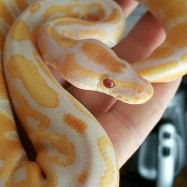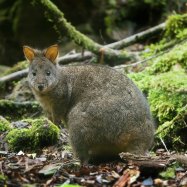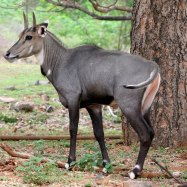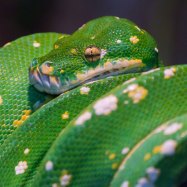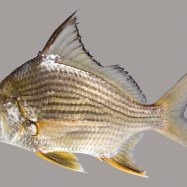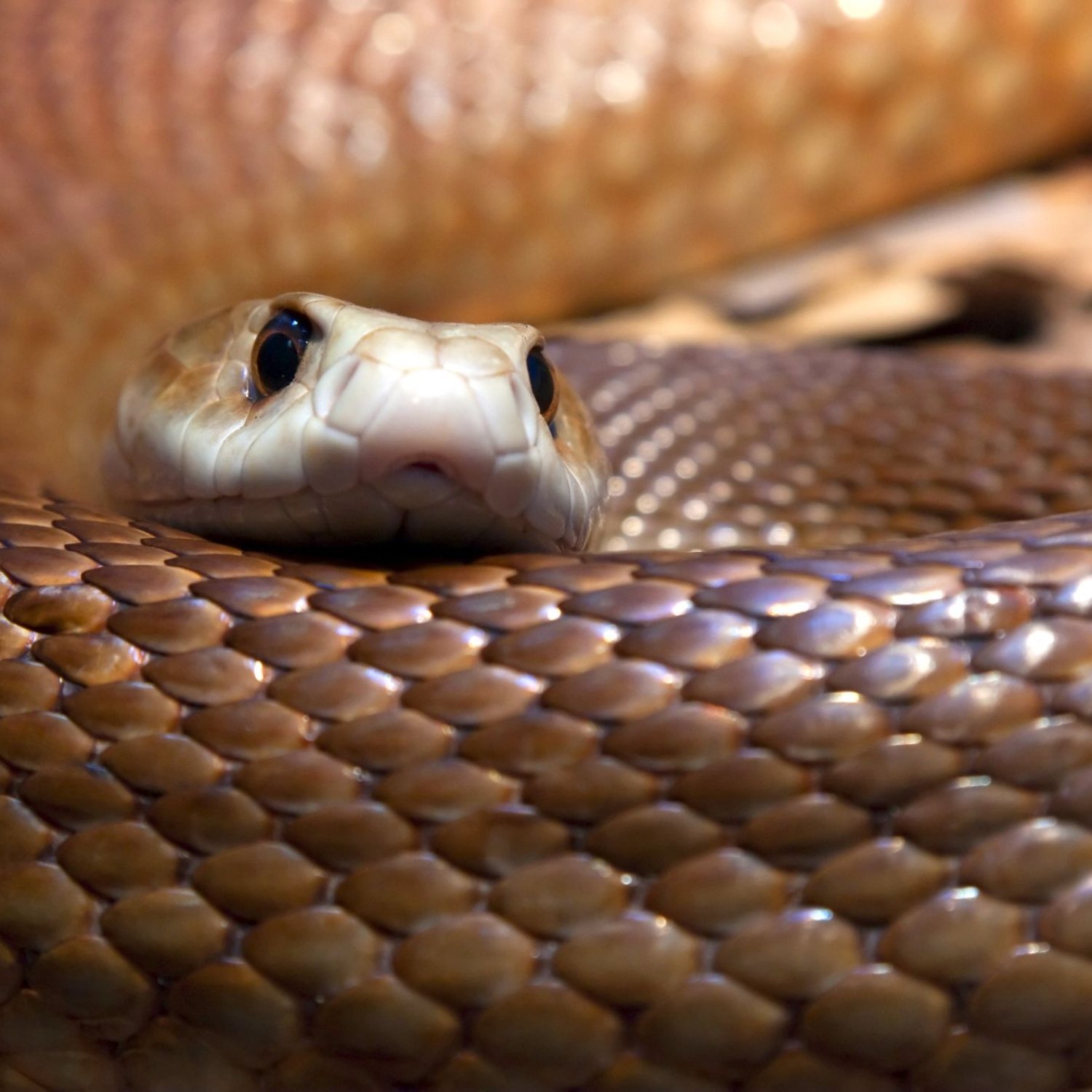
Taipan
2.5 to 3.3 meters
The Taipan, known for its deadly venom and impressive length of 2.5 to 3.3 meters, can be found in the northern and eastern regions of Australia. Belonging to the Elapidae family, this snake has a slender and elongated body shape. Beware of this reptile's potent bite on your outback adventures!
Animal Details Summary:
Common Name: Taipan
Kingdom: Animalia
Habitat: Savannas, grasslands, swamps, and forests
The Fierce and Deadly Taipan: The King of Australian Reptiles
The vast continent of Australia is home to many unique and fascinating creatures, and among them is the taipan, also known as the "king of Australian reptiles." This highly venomous snake is feared and respected by many, and rightfully so, as it holds the record for having the most toxic venom of any land snake in the world. In this article, we will take a closer look at this elusive and deadly reptile, including its scientific classification, physical appearance, habitat, feeding habits, geographical distribution, and its role in Australian culture.Scientific Classification
The taipan is scientifically known as Oxyuranus scutellatus, derived from the Greek words "oxys" which means sharp and "oura" which means tail, referring to its elongated and pointed tail Taipan. The species name "scutellatus" is derived from the Latin word "scutella" meaning shield or scale, referring to the shape of its scales.Appearance
Taipans have a distinctive and striking appearance, with a slender and elongated body, typically measuring 2.5 to 3.3 meters in length. However, some specimens have been recorded to reach up to 4 meters in length, making them one of the longest venomous snakes in the world. They have a light or dark brown coloration, with some individuals displaying shades of yellow or orange. The belly is a lighter shade of cream or yellow, with scattered dark spots.Like most snakes, taipans have a narrow head with small and deeply inset eyes. However, what sets them apart is their large and extremely powerful jaws, capable of delivering a potent bite Toy Fox Terrier. The pointed snout and sharp, needle-like teeth are adapted for their carnivorous diet, and snake expert Eric Worrell dubbed them as the "ferocious serpent."
Habitat and Geographical Distribution
Taipans are native to Australia and can be found in the northern and eastern regions of the country, particularly in the states of Queensland and New South Wales. They are also found in the southern regions of Papua New Guinea. Within these areas, they inhabit a variety of habitats, including savannas, grasslands, swamps, and forests. They are excellent swimmers and have also been spotted in bodies of water, such as rivers and streams.Feeding Habits
Taipans are carnivorous and primarily feed on mammals, such as rats, mice, and small marsupials. They also have a particular affinity for other reptiles, including other snakes, lizards, and even crocodile eggs. Taipans are ambush predators, and they use their highly venomous bite to immobilize their prey before swallowing them whole. Their venom is potent enough to kill their prey within minutes, making them a formidable predator in their environment.Interestingly, taipans are one of the few snakes that have been known to actively hunt during the day, making them a potential threat to humans and other animals alike. If disturbed or threatened, they will not hesitate to strike and deliver a toxic bite.
Cultural Significance
The taipan has a significant role in Australian culture, particularly in Aboriginal beliefs and traditions. The Aboriginal people have a strong connection to nature and consider the taipan as a symbol of fear, danger, and spiritual power. In their culture, snakes, including the taipan, are believed to possess great healing and transformative abilities.In modern times, the taipan has also gained attention in popular media, particularly in the world of sports. The Australian National Rugby League team, the North Queensland Cowboys, took on the taipan as their team mascot, honoring the fierce and indomitable spirit of the snake. This nickname has become a source of pride for the team and its supporters, representing their strength and tenacity on the field.
Conservation Status and Threats
The taipan is not currently listed as an endangered species, but its population is threatened by habitat destruction, human intervention, and illegal poaching for its highly valuable venom. Despite being a protected species, poachers still see value in extracting and selling its venom, which can sell up to $10,000 per gram.Furthermore, like many other Australian animals, the taipan is affected by climate change, with some areas experiencing extreme droughts and bushfires, destroying their natural habitat and reducing the number of prey. This loss of habitat and availability of food sources greatly impacts taipan populations and highlights the importance of conservation efforts.
In Conclusion
The taipan is a truly remarkable and fascinating creature, with its deadly venom, powerful jaws, and striking appearance. As the king of Australian reptiles, it plays a crucial role in maintaining the balance of its ecosystem and is deeply ingrained in the country's culture and history. While it may inspire fear and respect, the taipan reminds us of the beauty and complexity of nature and the importance of preserving and protecting it for future generations.

Taipan
Animal Details Taipan - Scientific Name: Oxyuranus scutellatus
- Category: Animals T
- Scientific Name: Oxyuranus scutellatus
- Common Name: Taipan
- Kingdom: Animalia
- Phylum: Chordata
- Class: Reptilia
- Order: Squamata
- Family: Elapidae
- Habitat: Savannas, grasslands, swamps, and forests
- Feeding Method: Carnivorous
- Geographical Distribution: Australia and New Guinea
- Country of Origin: Australia
- Location: Northern and eastern regions of Australia
- Animal Coloration: Generally light or dark brown, but can vary
- Body Shape: Slender and elongated
- Length: 2.5 to 3.3 meters
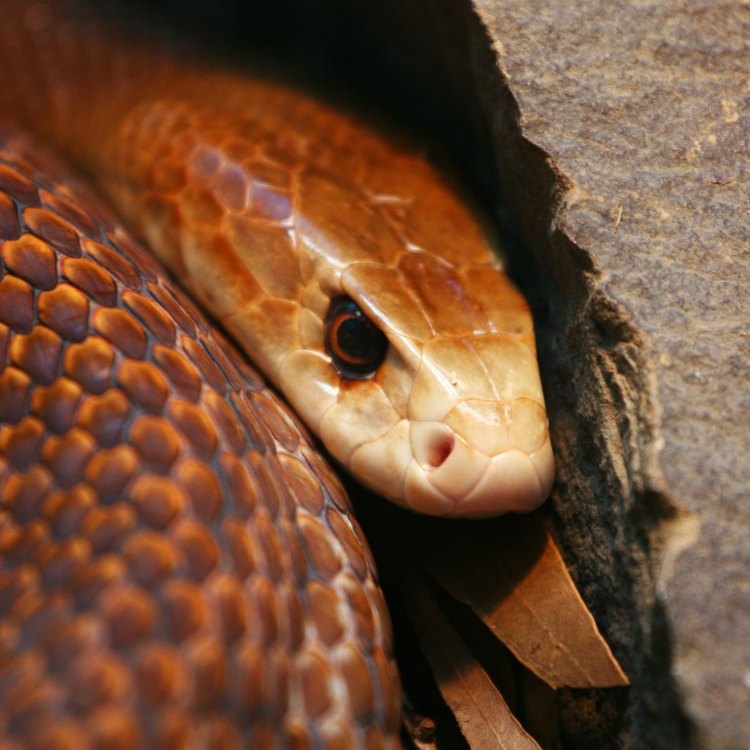
Taipan
- Adult Size: Large
- Average Lifespan: Around 10-15 years
- Reproduction: Sexual
- Reproductive Behavior: Oviparous (lays eggs)
- Sound or Call: Taipans produce rattling sounds when alarmed
- Migration Pattern: Non-migratory
- Social Groups: Solitary
- Behavior: Mostly active during the day
- Threats: Habitat loss and fragmentation, snake persecution
- Conservation Status: Least Concern
- Impact on Ecosystem: Plays a role in controlling rodent populations
- Human Use: Not used by humans
- Distinctive Features: Long, highly venomous fangs
- Interesting Facts: 1. The Taipan is considered one of the most venomous snakes in the world. 2. It has the ability to deliver multiple bites in a single attack. 3. Their venom can cause paralysis and eventually death if not treated. 4. Taipans are highly adaptive and can survive in various habitats. 5. They are fast and agile hunters, capable of striking with great speed. 6. The Taipan's venom has potential medical applications in the development of antivenom and medical research. 7. Despite their venomous nature, Taipans play an important role in their ecosystems as top predators.
- Predator: Humans are the primary predator
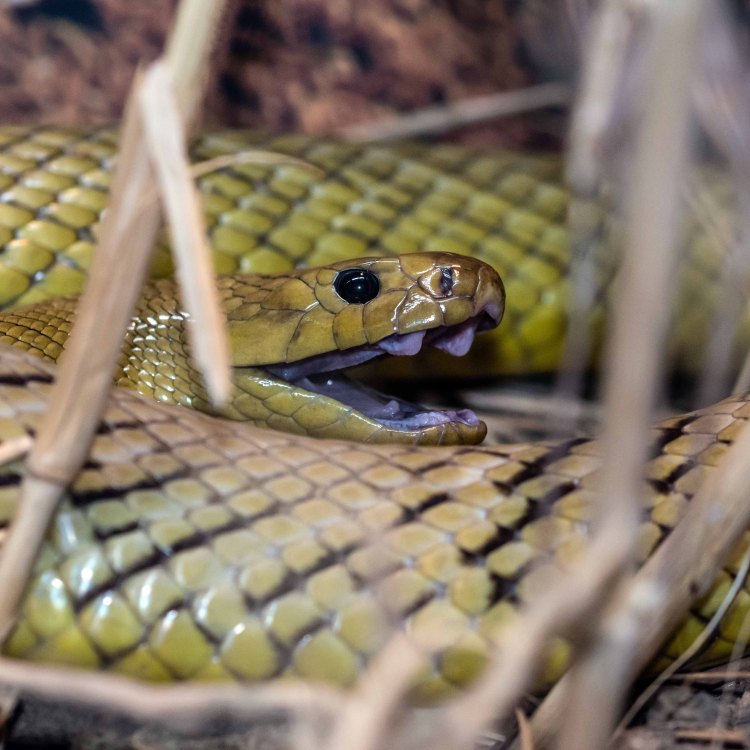
Oxyuranus scutellatus
The Mighty Taipan: A Deadly and Fascinating Snake
When it comes to venomous snakes, the Taipan immediately comes to mind as one of the deadliest and most fearsome species. Native to Australia, this large and highly venomous snake has captured the attention of many, both for its lethal nature and its unique characteristics.Adult Taipans can reach up to 6 feet in length, making them one of the largest snakes in Australia. They have an average lifespan of around 10-15 years in the wild, making them a long-lived species PeaceOfAnimals.Com. But what makes the Taipan stand out among other snakes? Let's dive into the distinctive features and amazing facts about this fascinating creature.
Distinctive Features: The Taipan's most notable feature is its long, curved fangs, which are highly venomous. These fangs can measure up to 13mm in length and can deliver a potent venom in just a single bite. This venom is so powerful that it can kill an adult human in just 45 minutes if left untreated.
Another striking characteristic of Taipans is their coloration. They have a light tan or greyish-brown color, with darker brown to black banding on the top of their bodies. This coloration serves as camouflage, especially in their natural habitat of dry woodlands, grasslands, and rocky areas.
Behavior: Unlike some snake species, Taipans are solitary creatures and are mostly active during the day. They can be found basking in the sun to regulate their body temperature, as they are cold-blooded animals Tufted Titmouse. However, during hot summers, they may become nocturnal to avoid the hot daytime temperatures.
Taipans are fast and agile hunters, capable of striking with incredible speed. They mainly prey on small rodents, such as rats and mice, but they have also been known to go after birds, lizards, and even other snakes. They use their sharp eyesight and powerful sense of smell to locate their prey, and once they strike, their venom quickly paralyzes their victim.
Reproduction: Taipans reproduce sexually and are oviparous, meaning they lay eggs. Breeding season for Taipans occurs in the spring and summer months, and females can lay up to 12 eggs at a time. These eggs are then left to hatch on their own, and the mother does not provide any maternal care to the hatchlings.
Threats and Conservation Status: Despite their venomous nature, humans are the primary threat to Taipans. Habitat loss and fragmentation, as well as snake persecution, have negatively impacted their populations in some areas. However, due to their wide distribution and adaptability, the International Union for Conservation of Nature (IUCN) has listed Taipans as a species of Least Concern.
Impact on Ecosystem: While humans may see Taipans as a threat, they play an essential role in their ecosystems as top predators. Their diet primarily consists of small rodents, which helps control their populations. Too many rodents can cause crop damage, leading to significant economic losses for farmers. Therefore, Taipans play a crucial role in maintaining balance in their ecosystems, ultimately benefiting human populations as well.
Human Use: Unlike some other snake species, Taipans have not been used by humans for medicinal or other purposes. Due to their highly venomous nature and the risks involved, there is no known traditional or modern use of Taipans.
Interesting Facts: Aside from their deadly venom and incredible hunting abilities, there are some other fascinating facts about Taipans that are worth mentioning.
For instance, Taipans are known to produce rattling sounds when alarmed. While not all Taipans make this sound, some have been observed producing a loud rattle by rapidly shaking their tail, mimicking the sound of rattlesnakes.
Their venom, while dangerous to humans, has potential medical applications. Researchers have found that Taipan's venom contains a compound that can potentially treat blood pressure and diabetes. This venom has also been used in the development of antivenom to counteract the effects of Taipan bites.
Taipans are also highly adaptive and can survive in a variety of habitats, from coastal regions to mountainous areas. This adaptability makes them a versatile species, and they can be found in different regions of Australia, including the tropical far north and the temperate southern regions.
Predators: While snakes are well-known for being top predators in their ecosystems, humans are the primary predator of Taipans. This is mainly due to fear and misunderstandings about these creatures, which often leads to the unnecessary killing of Taipans. However, as mentioned earlier, Taipans play a vital role in controlling rodent populations, and their presence should be valued for their contributions to the ecosystem.
In conclusion, the Taipan is a remarkable and fascinating species that deserves our respect and admiration. While their venom may pose a threat to humans, they play an important role in their ecosystems and contribute to the balance of nature. It is crucial to educate ourselves about these incredible creatures and work towards conserving their habitats to ensure their survival in the future.
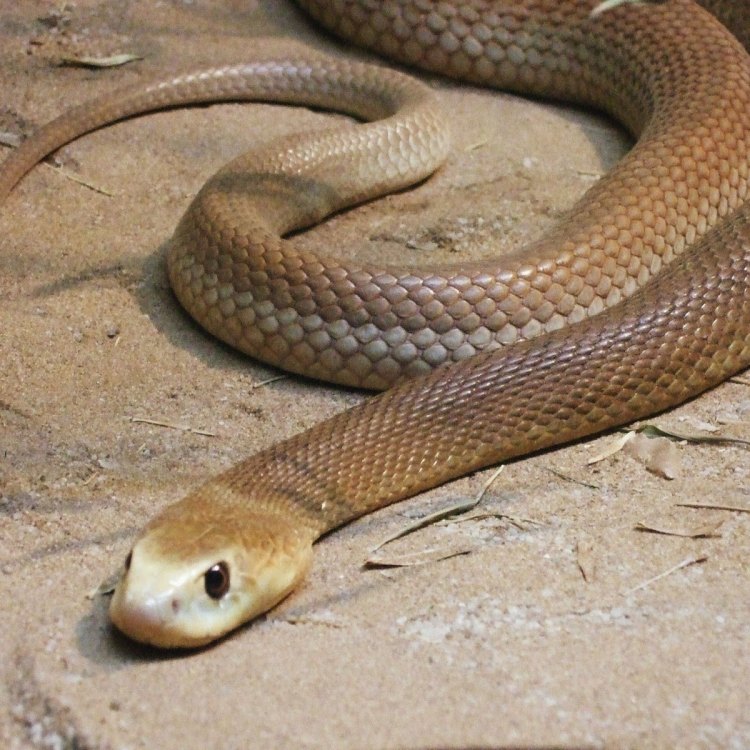
The Fierce and Deadly Taipan: The King of Australian Reptiles
Disclaimer: The content provided is for informational purposes only. We cannot guarantee the accuracy of the information on this page 100%. All information provided here may change without prior notice.


